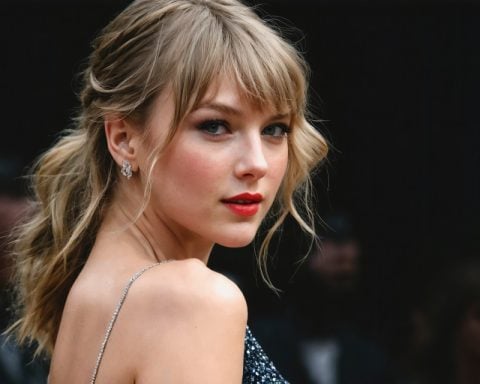Satellites Capture Russian Ships Leaving Syria’s Tartous Naval Base
Recent satellite imagery has revealed a significant shift in the deployment of Russian naval forces in Syria, specifically at the Tartous naval facility. Observations from 10 December show that several vessels, including guided missile frigates, have relocated approximately 13 kilometers offshore. The images suggest a temporary withdrawal rather than a complete exit, igniting debates about Russia’s military strategy in the region.
Despite the activity observed at the Khmeimim airbase, where military jets and helicopters remain stationed, the fate of the naval presence hangs in uncertainty. The Kremlin’s spokesperson has indicated ongoing discussions with new authorities in Syria regarding future military operations. The Tartous base, crucial for Russia’s Mediterranean engagements and home to elements of the Black Sea Fleet, has been a focal point of Russian defense strategy since its expansion in 2012.
Analysts have raised concerns that the maneuvers could be precautionary, possibly in response to threats from rebel factions or potential attacks from Israeli forces. Some speculate that if Moscow were to abandon Tartous entirely, eyes might turn towards establishing a new foothold in Tobruk, Libya, which remains under the influence of a Kremlin ally.
As Russia grapples with its next move in this complex geopolitical landscape, the implications for its military ambitions in the region could be profound, leaving many observers watching closely for further developments.
Unveiling the Future of Russian Naval Operations: What Do Recent Developments Mean?
Satellites Capture Russian Ships Leaving Syria’s Tartous Naval Base
Recent satellite imagery has brought to light a significant evolution in the operational stance of Russian naval forces stationed at the Tartous naval facility in Syria. Observations taken on December 10 reveal that multiple vessels, including guided missile frigates, have shifted approximately 13 kilometers offshore. This movement suggests a temporary withdrawal rather than a complete exit, stirring discussions regarding Russia’s military strategy in the region.
Current Context of Russian Naval Presence
While the satellite images depict alterations at the Tartous base, activities at the Khmeimim airbase suggest continued military engagement in Syria, with jets and helicopters still stationed there. The Kremlin’s spokesperson has alluded to ongoing discussions with Syrian authorities, hinting that military operations are not ceasing entirely.
The Tartous facility, established as a pivotal component of Russia’s Mediterranean strategy, serves as a critical node for the Black Sea Fleet. Its strategic location allows for enhanced regional influence, which Russia has worked to solidify since expanding its involvement in the area in 2012.
Potential Implications and Strategic Analysis
Analysts have raised alarms that the recent naval maneuvers may be precautionary, potentially aimed at mitigating threats posed by rebel factions or prospective Israeli airstrikes. In the event of a complete Russian withdrawal from Tartous, speculation suggests that Russia might consider establishing a new base in Tobruk, Libya—a location with strong historical ties and influence from Russian allies.
# Pros and Cons of Russian Naval Operations in Syria
Pros:
– Strategic Maritime Presence: Positioning in the Mediterranean allows for increased influence over maritime routes.
– Support for Syrian Government: Strengthens the Syrian regime’s military capabilities against various factions.
– Operational Flexibility: Ability to reposition naval assets based on evolving threats.
Cons:
– Risk of Escalation: Increased naval presence may attract provocations from neighboring nations, particularly Israel.
– Resource Allocation: Maintaining a consistent naval presence can strain resources, especially in light of ongoing conflicts elsewhere.
– Political Repercussions: Withdrawal may indicate a weakening resolve and affect regional partnerships.
Tactical Use Cases and Insights
The shifting of Russian naval vessels may demonstrate a tactical repositioning to create buffers against perceived threats. Experts argue that this maneuver could help assess the operational landscape more effectively while covering strategic withdrawal routes should military situations deteriorate.
Furthermore, with global maritime strategies evolving, Russia’s potential pivot to Libya could secure a foothold, allowing for a more aggressive posture in the North African region while countering Western influence.
Market Analysis and Future Trends
As we analyze the geopolitical landscape, several trends emerge:
– Increased Naval Activity: Expect heightened naval deployments from multiple nations in the Mediterranean.
– Focus on Regional Allies: Russia may increasingly rely on partnerships with nations like Libya to support its maritime strategies.
– Technology in Intelligence: The role of satellite technology in monitoring naval movements will become crucial for nation-states reevaluating their positions.
Conclusion: A Complex Future Ahead
As Russia navigates its next moves within this charged geopolitical theater, the implications of recent developments at Tartous could reshape its military ambitions in the Mediterranean. Observers will be keeping a close watch for further movements that may signal larger shifts in strategy.
For more updates on geopolitical developments and military strategies, visit Defense News.



















